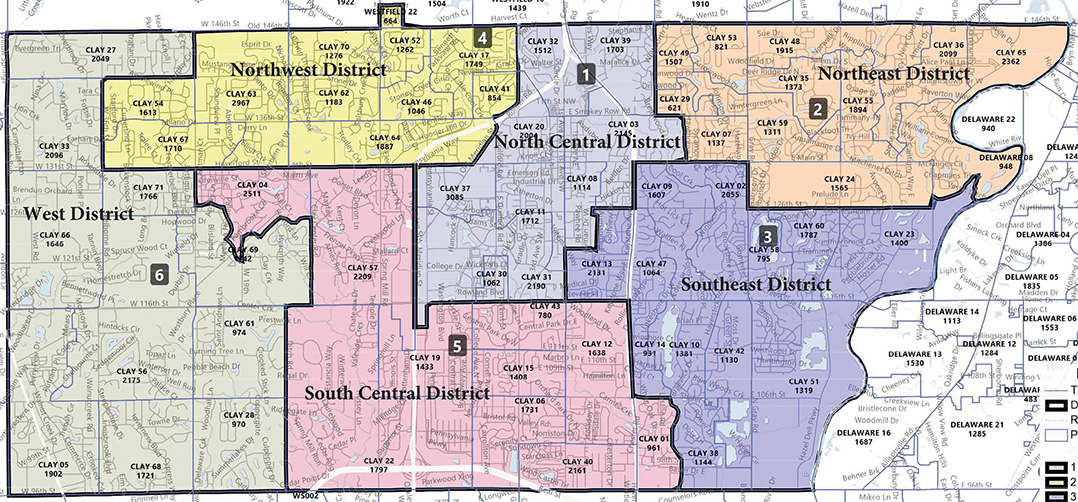The Carmel City Council met Nov. 21 to discuss new boundaries for council districts, a rezone along 1st Ave. SE, a tax rate cap and more.
What happened: The council voted 7-1 to approve new boundaries for council districts.
What it means: State law requires municipalities to redistrict two years after a U.S. census to balance populations in each district. According to state law, the new districts should be comprised of contiguous territory, be reasonably compact, avoid splitting precincts and balance populations as equally as possible. Councilor Tony Green, who lost two precincts in his district and whose district was most altered in 2018 redistricting, voted against the new boundaries.

What’s next: The boundaries will determine representation for candidates in the 2023 municipal primary election. Current councilors will continue to represent existing districts until their terms end in January 2024.

What happened: The council voted 8-0 to rezone four parcels along the west side of 1st Ave. SE between 1st Street SE and Supply Street from residential to C2/Mixed-Use District.
What it means: Parcels on the west side of the block are already zoned C2, and the proposed ordinance would lead to the entire block being zoned for mixed-use. The Carmel Redevelopment Commission is working with developers on a plan for the site, which includes a three-story mixed-use development on the west side anchored by 1933 Lounge.
What’s next: Councilors said some nearby residents have been concerned about parking when the project is complete and that the council will revisit the issue if it becomes a problem.
What happened: The council unanimously approved a resolution capping the city’s property tax rate for 2023 at .7877 cents per $100 of assessed value.
What it means: The council requested the resolution during a discussion about an ordinance increasing the property tax levy limit by up to $420,000 in 2023. The council also approved the levy limit ordinance on Nov. 21, and the rate cap resolution ensures Carmel taxpayers won’t see their property tax rate rise because of the levy increase.
What’s next: The Indiana Dept. of Local Government Finance will decide whether to allow the levy limit to increase.
What happened: The council introduced an ordinance amendment that more clearly defines “public art” and what will be subject to review by the Carmel Public Art Advisory Committee.
What it means: The amendment states that the committee will only review permanent (installed or displayed for two years or more) art and that public art “does not include the purchase of technological equipment used to display content that could be construed as art, including, but not limited to, television screens, speakers or projection systems.” The clarification was requested after questions arose about whether the committee would review a light show planned on the exterior of the Palladium.
What’s next: The council’s finance committee will discuss the amendment in greater detail. A meeting date had not been announced as of press time.
What happened: The council approved $50,000 for the non-reverting sidewalk program fund.
What it means: In 2020, the council established a Sidewalk Repair Grant program to help keep residential sidewalks across the city in good shape and safe. The council aims to have $50,000 available for the program each year. The fund assists residents who own and occupy their homes with the expense of repair/replacement of sidewalks and for removal of trees located on their private property that are affecting sidewalks by reimbursing up to 50 percent of the project cost, up to $3,000.
What’s next: Learn more about the program and apply at carmel.in.gov/government/departments-services/community-services/sidewalk-repair-grant.


